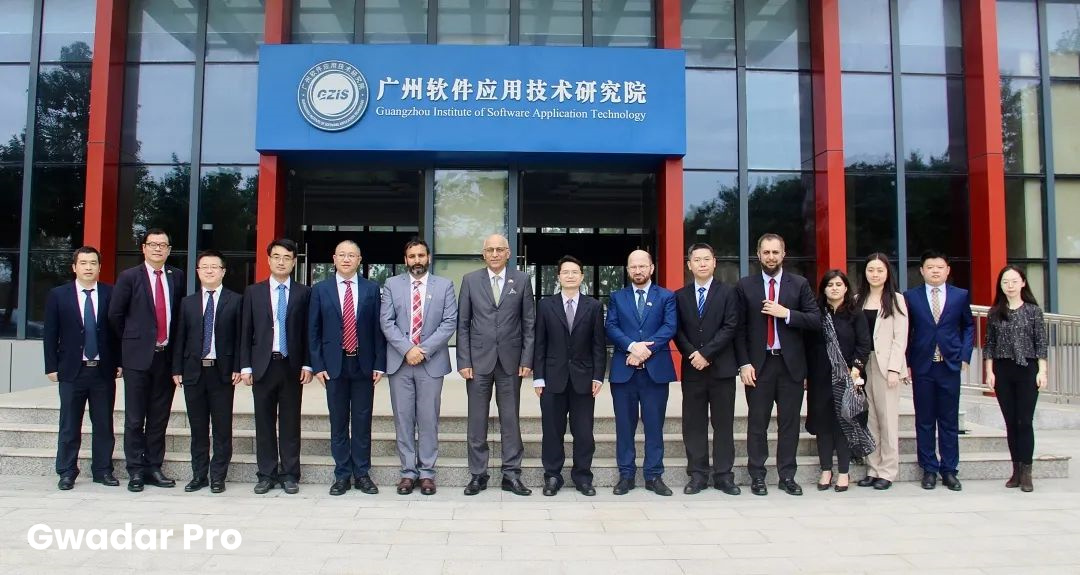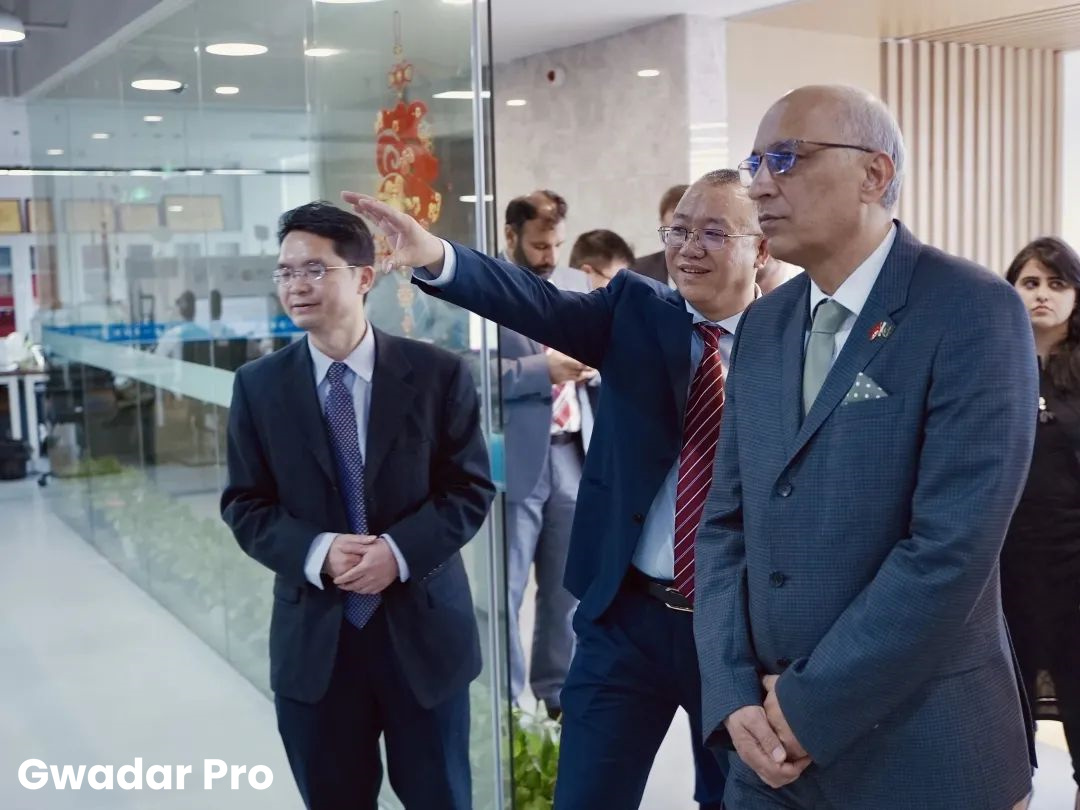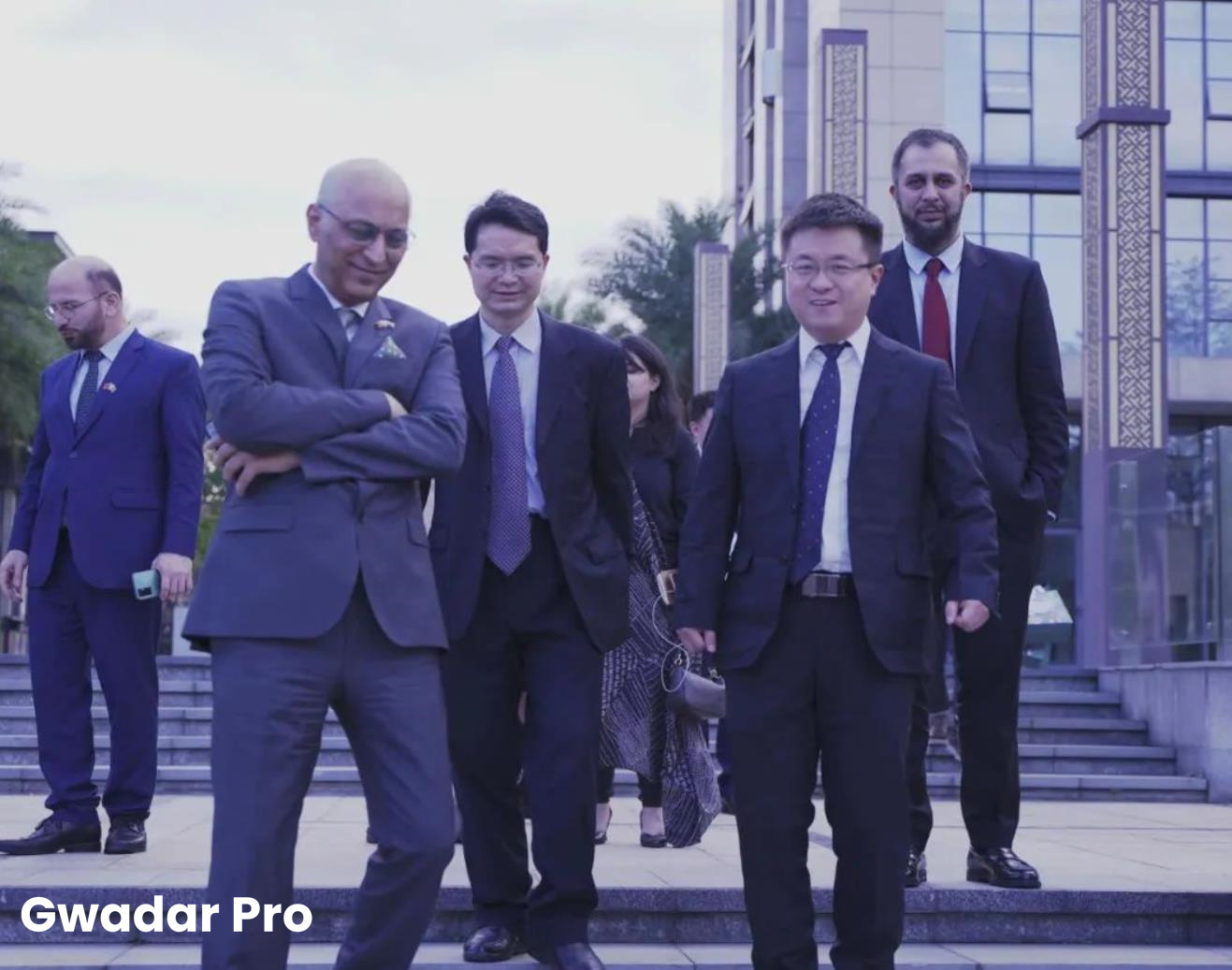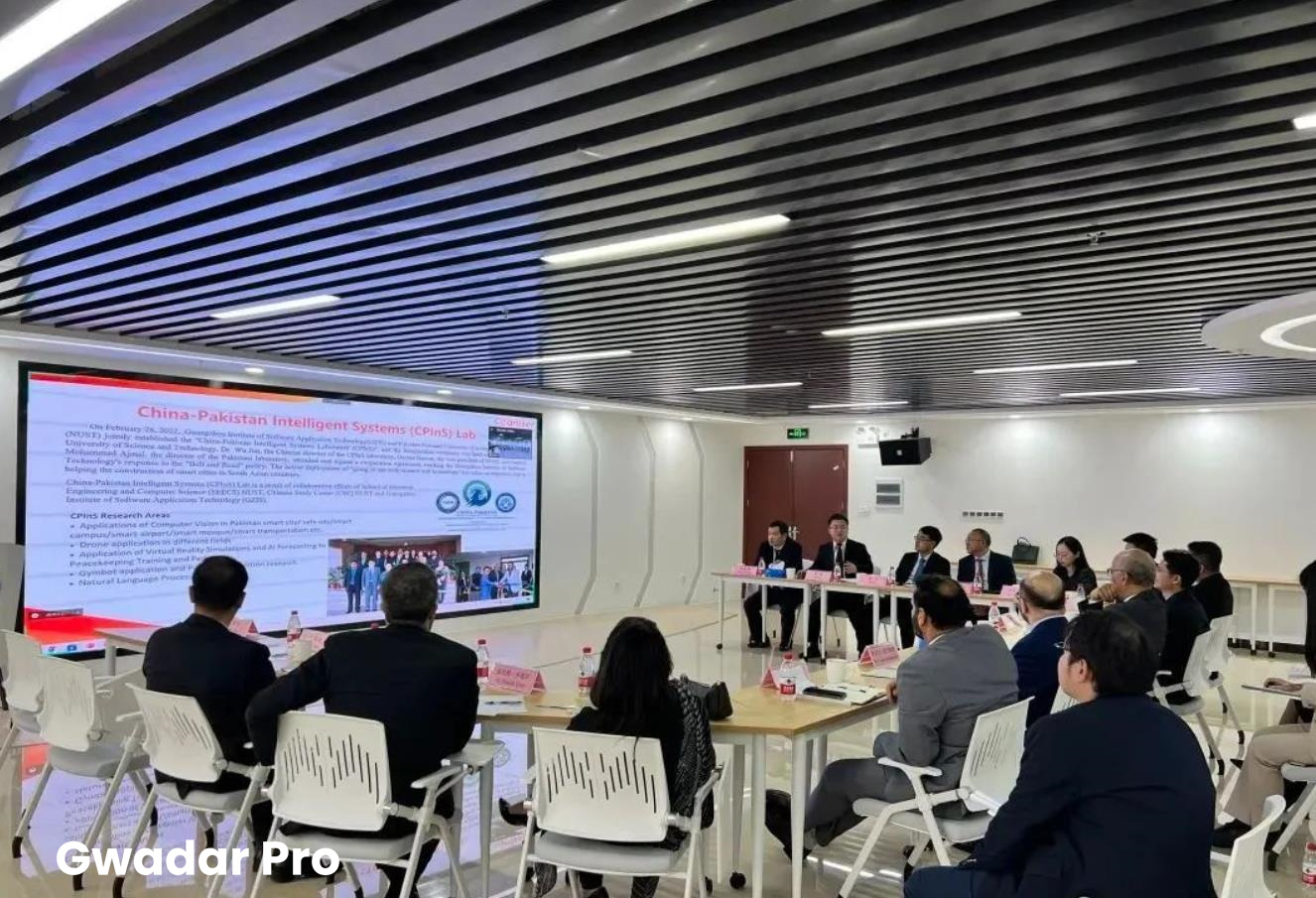ISLAMABAD, Feb. 15 – “Last year, President Xi Jinping indicated that the China-Pakistan Economic Corridor (CPEC) needs to be further upgraded to the China-Pakistan Digital Corridor (CPDC). I sincerely hope that the laboratory can and should become the starting point for Pakistan’s digital blueprint,” noted Moin ul Haque, Pakistani Ambassador to China, while visiting Guangzhou Institute of Software Application Technology (GZIS), the builder of the first China-Pakistan Intelligent Systems (CPInS) Lab, recently.


Ambassador Moin ul Haque visited Guangzhou Institute of Software Application Technology [Photo provided to Gwadar Pro]
At the beginning of year 2022, the CPInS Lab was officially established at Pakistan National University of Science and Technology (NUST), with joint efforts of NUST and Guangzhou Institute of Software Application Technology. At present, various researches are in progress in an orderly manner.
“At present, we have made great progress in areas such as UAV control systems and AI recognition localization. Next step, our lab will start the application of smart cities in Pakistan,” Dr. Wu Jun, the Director of CPInS Lab, told Gwadar Pro.

Ambassador Moin ul Haque with Dr. Wu Jun (R) [Photo provided to Gwadar Pro]
According to Moin ul Haque, what he is most concerned about is how to use artificial intelligence as an opportunity to set off Pakistan’s technological revolution, therefore Pakistan can rise faster into an emerging industrial country, and how to strengthen Pakistan’s security infrastructure through AI. “I am looking forward to a technology industrial park like China’s Zhongguancun thriving in Pakistan. This laboratory has undoubtedly taken the first step.”
“Regarding smart city, currently, Cogniser-V1 intelligent video analysis project-a pilot project with the Government of Pakistan, and our commercial project GymBot, are the main projects that are under development.” Dr Wu revealed. “Using AI and Computer Vision Algorithms, the former has the ability to sense the people who are lurking around in certain areas and generate warnings, regarding dangerous behavioral patterns, for instance, suicide, attack or other suspicious activities. Besides, it also involves license plate recognition as well as certain bearded facial recognition in Pakistan. The latter, as an algorithmic system used to recognize body movements, is designed to be a deep learning device, using AI and Computer Vision Algorithms and serve as an auxiliary tool under various gym scenarios. It is also perfect as a training aid for local security personnel.”

A seminar about CPInS [Photo provided to Gwadar Pro]
This year marks the 10th anniversary of the Belt and Road Initiative, the CPInS Lab will showcase the advanced achievements of cooperation between the two countries in artificial intelligence and smart cities. “Next, we will carry out more in-depth and all-round cooperation with Pakistan in the field of digital economy, conducting digital 3D scanning of Gandhara art and related artificial intelligence development. The lab will use algorithms to preserve, restore and reproduce the flourishing of Gandhara art,” Xiang Yang, Director of the China Study Center at NUST, told the reporter.
As an emerging economy, Pakistan’s infrastructure is booming day by day. A large number of road cameras and other equipment have not been intellectualized yet, which shows that the CPInS Lab has a great potential in the future. Generally speaking, the field of artificial intelligence in Pakistan has not yet formed an industry, but the country is never short on sci-tech talents. “Through further cooperation with China, Pakistan is fully capable of becoming an artificial intelligence development hub in South Asia and the wider region,” Ambassador Haque concluded, full of confidence.















